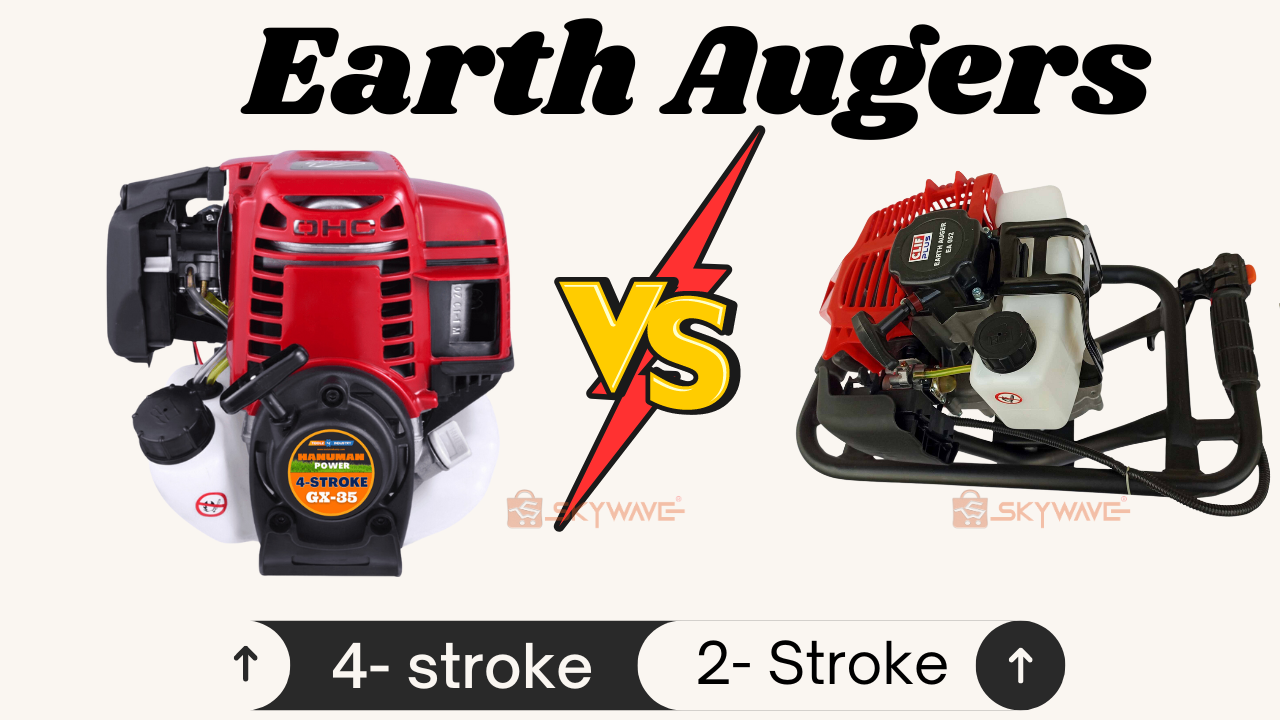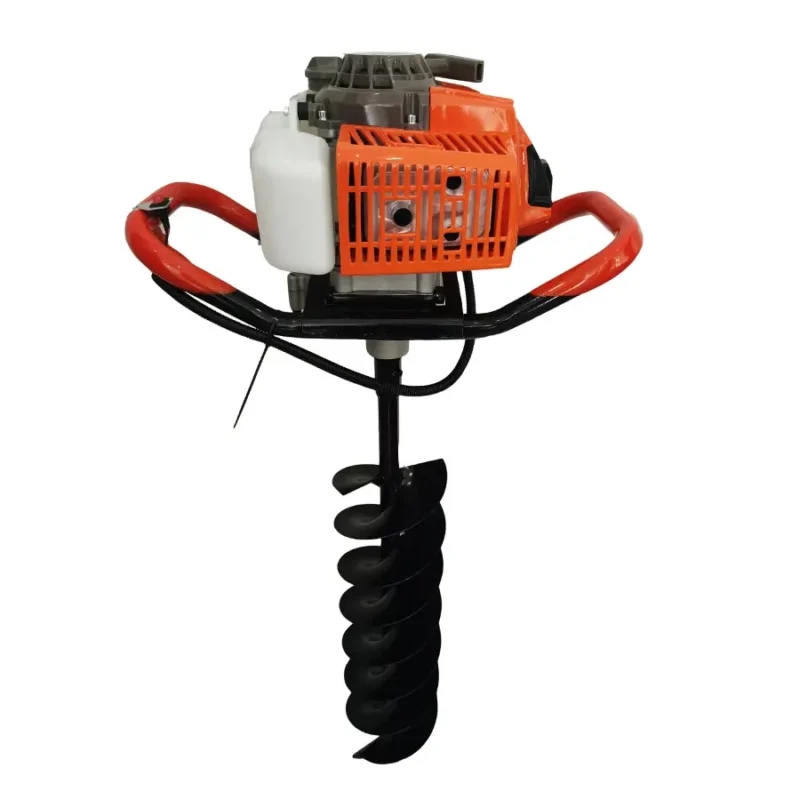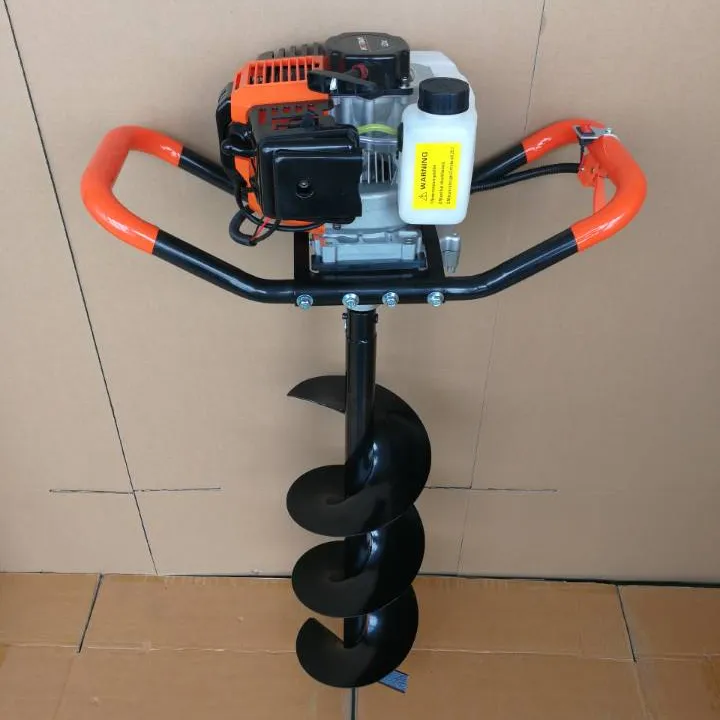Blog Posts
4-Stroke and 2-Stroke Earth Augers: The Main Differences

Earth augers are becoming a popular option in Kenya. They are essential tools for anyone involved in landscaping, agricultural projects, and construction, particularly for tasks that require drilling holes into the ground. Whether it is for installing fence posts, planting trees, or setting up signs, the right earth auger can significantly ease the workload. Generally, there are 4-stroke and 2-stroke earth auger engines, each offering distinct advantages and challenges.
Getting to understand the differences between 4-stroke and 2-stroke earth auger is crucial for making an informed decision tailored to specific needs. Not to worry you have landed at the right place. In this blog post, we will delve deeper into the pros and cons of each engine type, evaluating factors like engine performance, maintenance requirements, and other critical parameters. By the end of this comparison, you should have a clearer understanding of which engine earth auger best suits your requirements, ensuring efficiency and effectiveness in your drilling tasks.
How Both Engines Work
Before we delve into the comparisons of both engines let’s first understand how they work and also weigh their pros and cons.
1. 4-Stroke Engines

A 4-stroke earth auger operates through four distinct stages: intake, compression, power, and exhaust. During the intake phase, the intake valve opens, allowing the fuel-air mixture to enter the combustion chamber. In the compression stage, the piston moves upwards, compressing this mixture. Next, the power phase involves the ignition of the compressed fuel-air mix, pushing the piston down and thus generating power. Finally, the exhaust phase expels the burnt gases through the exhaust valve, completing the cycle.\
A. Benefits of a 4-stroke earth auger
– These engines offer superior fuel efficiency as they utilize the fuel more effectively compared to their 2-stroke counterparts.
– 4-stroke engines generally provide more consistent and powerful performance, an essential trait for tasks demanding high earth auger performance.
– In addition, 4-stroke engines produce lower emissions, making them a more environmentally friendly choice. They also tend to operate more smoothly with reduced vibration, contributing to user comfort and decreasing operator fatigue.
B. Disadvantages of a 4-stroke earth auger
Weight – Due to the additional components required for the 4-stroke cycle, these engines tend to be heavier than 2-stroke engines. This can impact the overall weight and portability of the earth auger.
Starting Difficulty– In colder conditions, 4-stroke engines can be more challenging to start compared to their 2-stroke equivalents.
Complex maintenance – The added complexity of these engines, which results from the more intricate design and more moving parts, can also complicate earth auger maintenance. This increased complexity can lead to higher repair and maintenance costs.
Budget – 4-stroke engines typically come with a higher initial purchase price, which might be a consideration for budget-sensitive consumers.
Understanding the mechanics and performance factors of a 4-stroke earth auger is fundamental for making an informed decision. While they offer numerous advantages such as better fuel efficiency, increased power, and reduced emissions, the considerations of increased weight, more complex maintenance, and higher costs should also be assessed to determine the best fit for specific applications.
2. 2-Stroke Engines

2-stroke engines operate by completing a power cycle in just two strokes of the piston—compression and power. This mechanism, distinct from the 4-stroke process, aids in achieving a more compact design, integral for applications such as earth augers. The primary reason many choose a 2-stroke earth auger is its lightweight nature. Without the complex valve system typical in 4-stroke engines, 2-stroke variants tend to be more straightforward, resulting in reduced weight. This offers significant ease of handling, particularly beneficial during prolonged periods of drilling.
A. Advantages of a 2-stroke engine
Power-to-Weight Ratio – These engines often deliver impressive power output relative to their size, making them suitable for demanding applications.
Weight – 2-stroke engines are generally lighter than their 4-stroke counterparts, making the overall earth auger more portable and easier to maneuver.
Lower Costs– Additionally, the simplified mechanics of a 2-stroke engine translate to lower initial and ongoing costs, minimizing earth auger maintenance concerns.
Starting Ease – 2-stroke engines typically start more readily, especially in cold conditions.
B. Disadvantages of a 2-stroke engine
Fuel Consumption -They are known for higher fuel consumption per operating hour compared to their 4-stroke counterparts. This can lead to increased operational costs over extended use.
Emissions – 2-stroke engines generate more emissions due to the combustion of oil mixed with fuel. This could pose environmental challenges and might necessitate compliance with emissions regulations in certain regions.
Noise levels– The design of 2-stroke engines typically results in louder operation, which can be a drawback in noise-sensitive environments.
Despite these drawbacks, the combination of reduced weight, robust power output, and simpler design makes the 2-stroke earth auger a compelling choice for many users, balancing efficiency against potentially higher operational and environmental costs.
Comparing 4-stroke and 2-stroke earth augers: Performance and Maintenance
When tackling the task of selecting the right engine for earth augers, it’s crucial to understand the differences between 4-stroke and 2-stroke earth augers. To assist in making an informed decision, we present a detailed comparison that highlights the key aspects of performance and maintenance for both types of engines. This earth auger comparison speaks to power output, fuel efficiency, emissions, weight, maintenance complexity, and overall cost.
In the table below, we summarize the fundamental differences between 4-stroke and 2-stroke earth augers based on various performance and maintenance parameters.
| 4-Stroke Earth Auger | 2-Stroke Earth Auger | |
|---|---|---|
| Power Output | Steady, suitable for prolonged use | Higher peak power, suited for short bursts |
| Fuel Efficiency | More fuel-efficient due to better combustion | Less fuel-efficient; consumes more oil |
| Emissions | Lower emissions, more environmentally friendly | Higher emissions, less environmentally friendly |
| Weight | Generally heavier due to more components | Lighter and more portable |
| Maintenance Complexity | Requires regular maintenance but less frequent oil changes | Maintenance is easier but requires oil mixing with fuel |
| Overall Cost | More expensive initially but could save on fuel in the long run | Less expensive upfront but potentially higher operational costs |
Conclusion
In deciding between a 4-stroke and 2-stroke earth auger, it is essential to consider various factors including performance, maintenance, and cost. Both engine types offer distinct advantages and cater to different user needs. A 4-stroke earth auger is known for its fuel efficiency and cleaner emissions, making it an ideal choice for environmentally-conscious users and long-term projects that require a reliable engine. Additionally, 4-stroke models typically present easier earth auger maintenance due to their separate oil and fuel compartments.
On the other hand, a 2-stroke earth auger stands out for its higher power-to-weight ratio, making it suitable for projects that prioritize power and speed. Its simpler design results in lighter weight and lower initial costs, an attractive option for those seeking economical solutions or managing smaller projects. However, the necessity of mixing oil and gasoline and the potential for more frequent maintenance tasks are considerations to keep in mind when opting for a 2-stroke earth auger.
The choice between these two types of earth auger engines ultimately depends on specific project requirements and user preferences. Homeowners with occasional need for an earth auger might find the 2-stroke option sufficient and cost-effective, whereas professionals involved in frequent and intensive use could benefit from the longevity and efficiency of a 4-stroke earth auger.
By carefully weighing these aspects, you can select an earth auger engine that not only meets your immediate needs but also serves as a reliable tool in the long run. Both 4-stroke and 2-stroke earth augers have their unique strengths, and understanding these will help ensure your choice aligns with your specific applications and expectations. Still unsure about which engine type is right for you? Share your specific needs and preferences in the comments below, and we can provide tailored recommendations.
